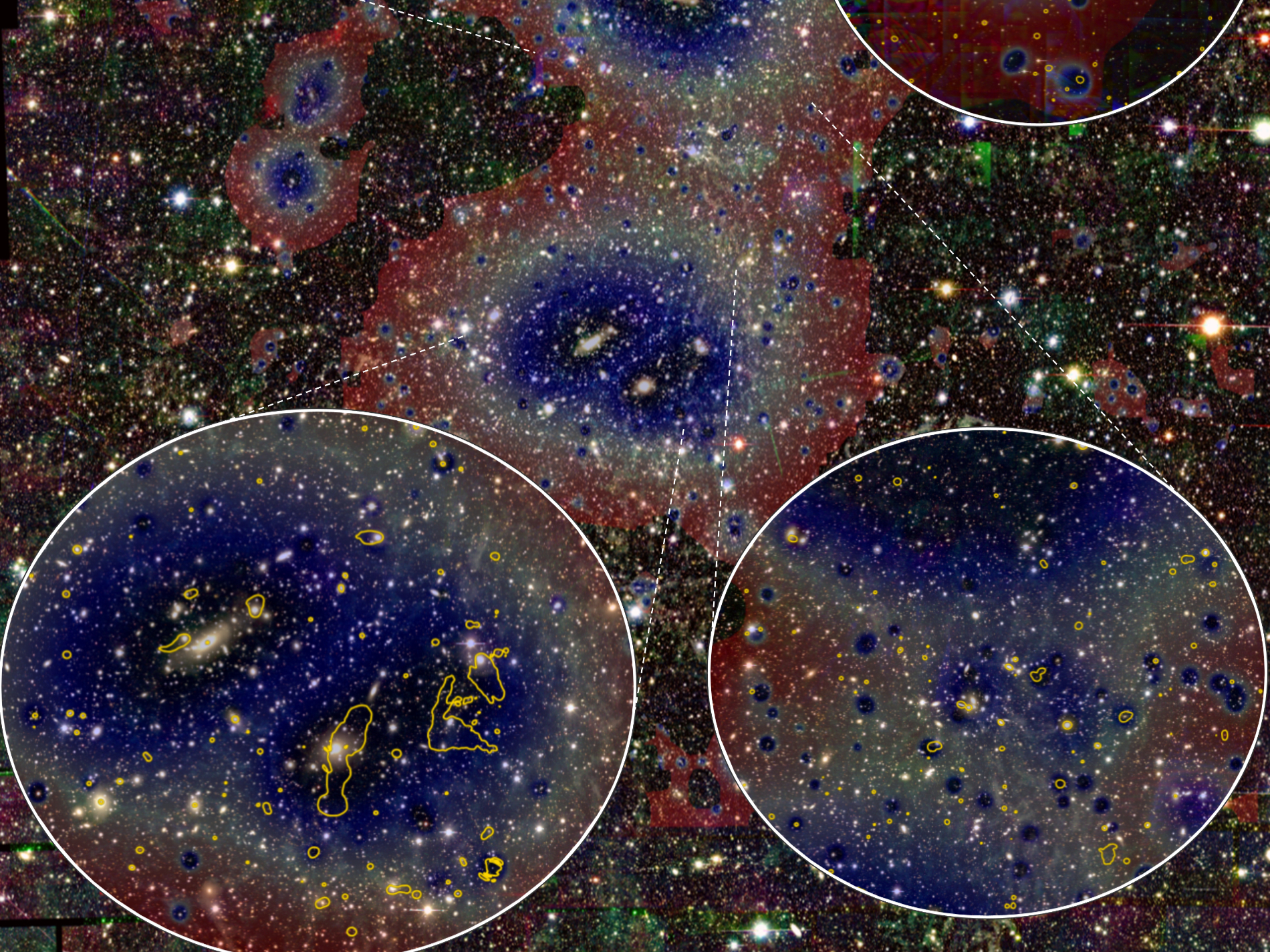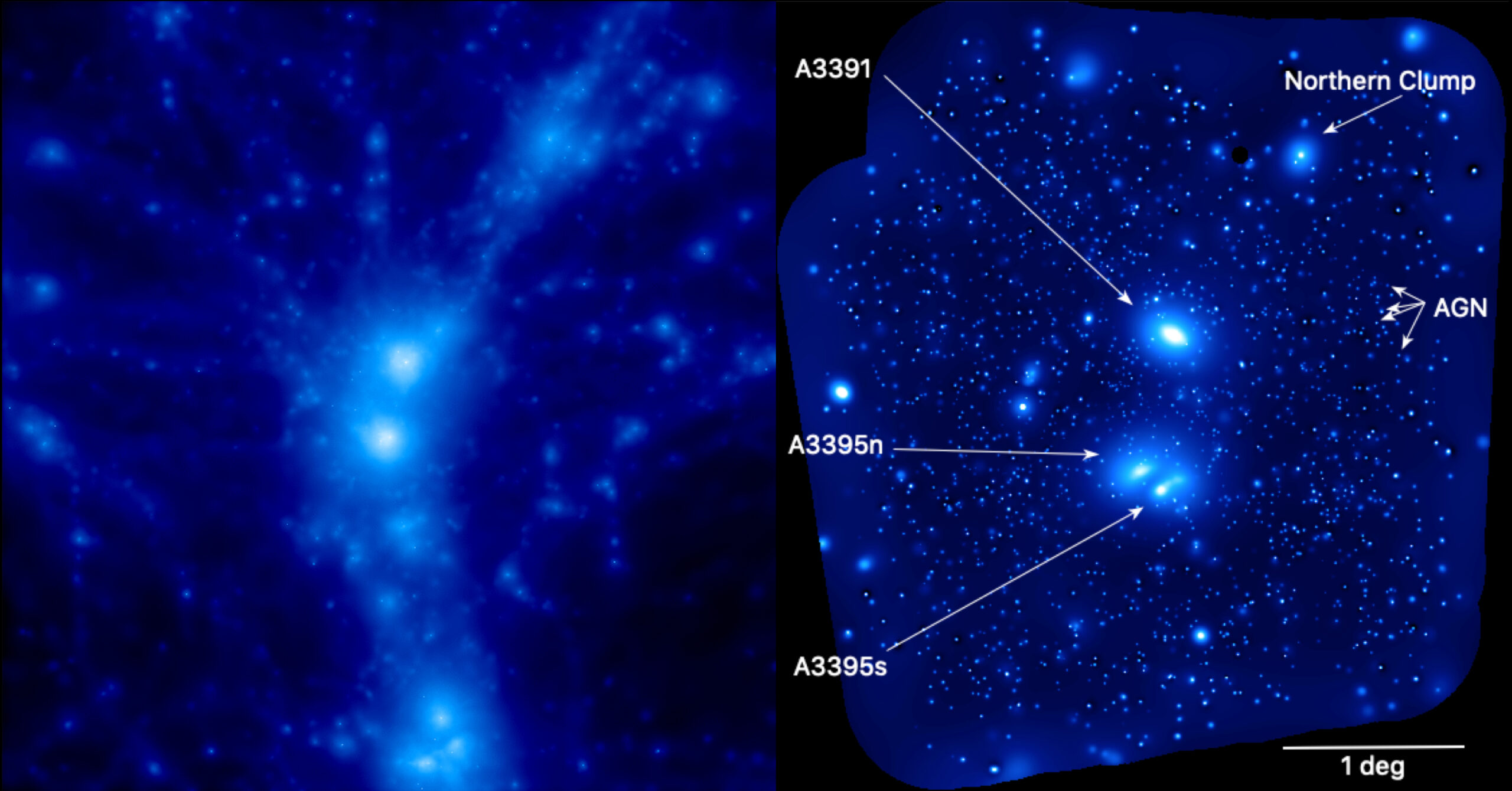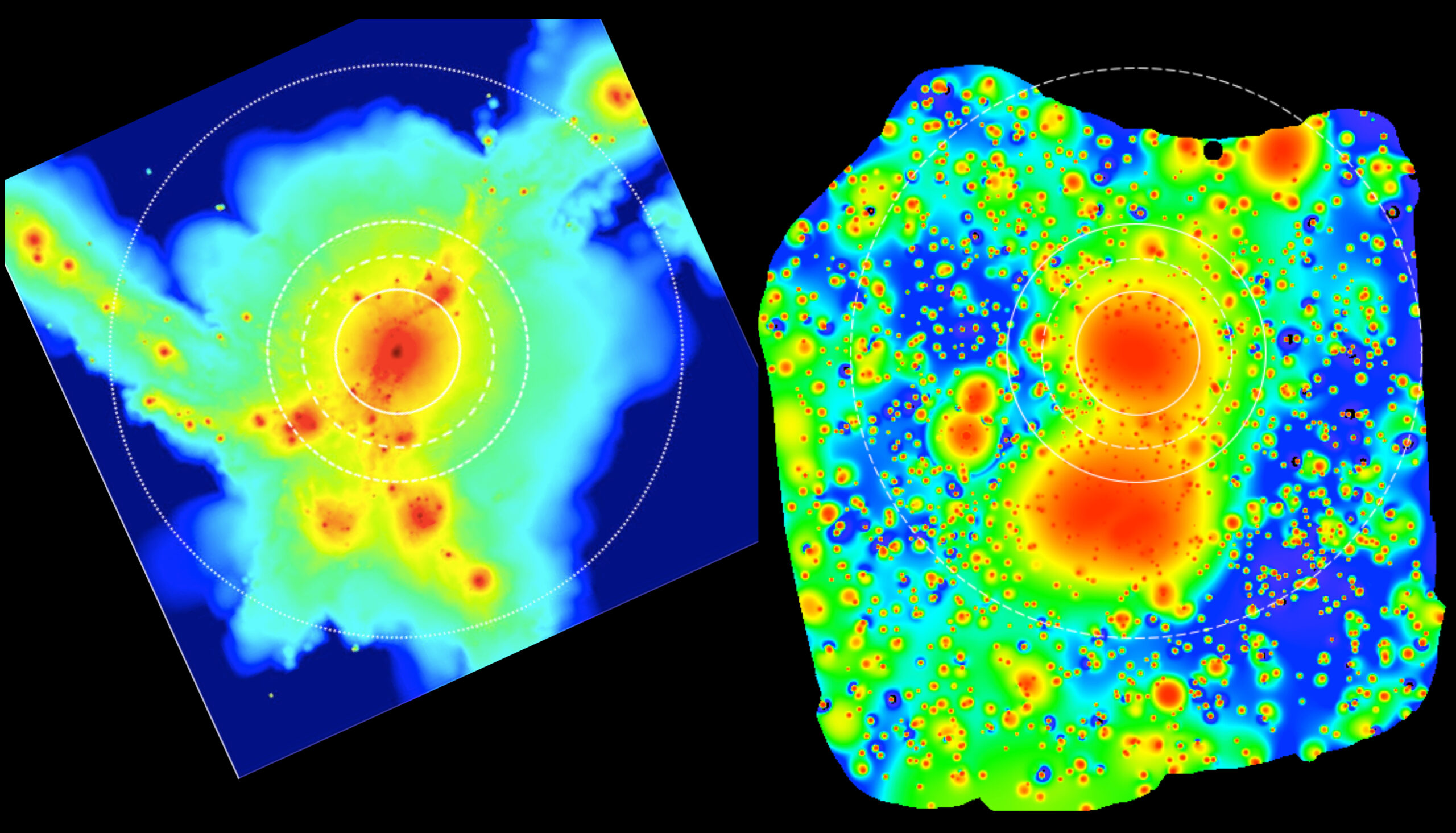Intergalactic gas filaments crisscross the universe
They crisscross the cosmos like cobwebs in a room that hasn’t seen a vacuum cleaner in a long time: In so-called filaments, unfathomably large, threadlike structures of hot gas that surround and connect galaxies and clusters of galaxies, astrophysicists have long suspected the previously hidden half of matter in our universe.
We owe our existence to a tiny error. After the big bang 13.8 billion years ago, the matter of the cosmos spread out in a gigantic gas cloud and was almost evenly distributed in it. Almost, but not quite: in some parts the cloud was somewhat denser than in others. And only for this reason there are planets, stars and galaxies today. Because in the denser areas a somewhat higher gravitational force prevailed, which drew the gas from the surroundings to itself. Thus in the course of the time more and more matter concentrated in these regions. The space in between, on the other hand, emptied. A kind of sponge structure developed: large holes without any matter, in between regions where thousands of galaxies gather in a small space, so-called galaxy clusters.
If this really happened, the galaxies and clusters should still be connected by remnants of this gas, like the gossamer threads of a spider’s web. «According to calculations, more than half of all the baryonic matter in our universe is contained in these threads – that is the form of matter that makes up stars and planets, as well as ourselves,» explains Prof. Dr. Thomas Reiprich of the Argelander Institute for Astronomy at the University of Bonn. But until now it has escaped our view: Due to the enormous expansion of the filaments, the matter in them is extremely diluted: it contains just ten particles per cubic meter, which is much less than in the best vacuum we can create on Earth.
But with a new measuring instrument, the eROSITA space telescope, Reiprich and his colleagues have now been able to make the gas completely visible for the first time. «eROSITA has very sensitive detectors for the kind of X-rays that come from the gas in the filaments,» Reiprich says. «It also has a large field of view – like a wide-angle lens, it captures a relatively large portion of the sky in a single measurement, and at a very high resolution.» This allows detailed images of such huge objects as filaments to be captured in a comparatively short time.
In their study, the researchers examined a celestial object called Abell 3391/95, a system of three galaxy clusters about 700 million light-years from us. The eROSITA images show not only the clusters and numerous individual galaxies, but also, for the first time, the gas filaments that connect these structures. The entire filament is 50 million light-years long. But it could be even more massive: Scientists suspect that the images show only a slice.
«We compared our observations with the results of a simulation that reconstructs the evolution of the universe,» Reiprich says. «The eROSITA images are strikingly similar to the computer-generated graphics. This suggests that the widely accepted standard model for the evolution of the universe is correct.» Most importantly, the data show that the missing matter is likely actually hidden in the filaments.


